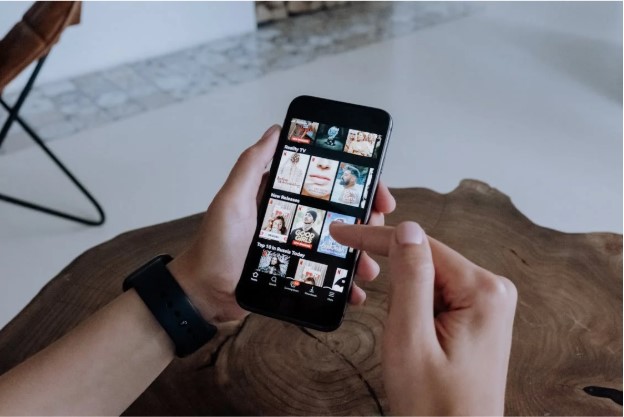Remember when we used to wait all week for one TV episode or crowd around a desktop just to play a pixelated game? Those days feel like a distant memory. Digital entertainment has become so deeply woven into our daily routines that it now defines how we unwind, socialize, and even express ourselves. It’s flexible, always available, and surprisingly personal.
What used to be a side activity has become a core part of how we spend time, with content that ranges from streaming shows and multiplayer games to virtual concerts and mobile apps. It’s more than a digital distraction—it’s how we live, laugh, and relax.
The Rise of On-Demand Everything
One of the biggest perks of digital entertainment? You’re in control. Unlike traditional media, which followed fixed schedules and limited choices, digital platforms let you decide what, when, and how to engage. You can jump between music, videos, interactive games, and livestreams without missing a beat.
This on-demand culture has shifted how we think about downtime. Entertainment is no longer something we wait for—it’s something we squeeze into lunch breaks, commutes, or even in between meetings. The lines between “screen time” and “me time” are officially blurred.
Streaming platforms, short-form video apps, podcasts, and mobile games all cater to this micro-engagement model. They’re fast, flexible, and tailored to your mood.
From Solo to Social: Connecting Through Screens
While digital entertainment might seem like a solitary experience, it’s more social than ever. Livestreaming platforms let users chat while watching content in real time. Multiplayer games turn strangers into teammates. Even comment sections and memes have become spaces for interaction.
Virtual communities are thriving. People find connection in fandoms, livestreams, and niche platforms where they can bond over shared interests. Whether it’s a weekly trivia night via Zoom or a Discord group for your favorite game, digital entertainment makes it easier to meet like-minded people without ever leaving your room.
Even interactive sites like casino sites have adapted to this social shift, incorporating chat functions and community engagement so users can share experiences in real time. Entertainment has become something we don’t just consume—but also co-create and share.
Bite-Sized Fun for Busy Lives
Long gone is the idea that entertainment has to be a long sit-down affair. Digital life has given rise to bite-sized fun: ten-minute games, two-minute comedy clips, thirty-second music remixes. They’re low commitment but high impact, making them perfect for our increasingly busy, multitasking lifestyles.
Platforms like TikTok, Instagram Reels, and YouTube Shorts have trained us to expect quick laughs, short bursts of inspiration, and instantly gratifying content. It’s not about zoning out for hours; it’s about mini-escapes you can fit into the nooks and crannies of your day.
This trend has also shaped game design. Many mobile and browser-based games now feature simplified mechanics and short rounds that make them more approachable. You don’t need to carve out time to enjoy yourself—you just need a moment and a device.
The Beauty of Personalization
One of digital entertainment’s greatest strengths is how it tailors itself to your preferences. Algorithms track what you like, when you like it, and even how long you spend with certain types of content. The result? A curated feed that feels like it knows you better than some of your friends do.
Whether it’s a recommended playlist, a surprise video, or a game suggestion, personalized entertainment keeps us engaged by offering exactly what we want—sometimes before we even know it. This keeps people coming back, not just because of the variety, but because it feels intuitive.
This is especially true on platforms that offer interactive experiences. Customization options, theme variations, and mood-based recommendations let users shape their own entertainment journey, making it feel less like a transaction and more like an experience.
Gamification of Everyday Life
Digital entertainment isn’t limited to the “entertainment” category anymore. It’s bleeding into education, wellness, fitness, and even productivity. Thanks to gamification—the application of game-like elements into non-game settings—we’re now tracking our workouts, learning languages, and managing tasks with apps that feel like games.
Badges, points, progress bars, and streak counters are now part of our daily routine. It turns what used to feel like chores into fun little challenges. And that’s the magic of digital: it doesn’t just entertain—it motivates and engages.
This crossover appeal is why even traditionally niche platforms, like casino sites, are attracting broader audiences. The design, engagement loops, and instant feedback cater to a generation that thrives on dynamic interaction and reward-based progression.
Mindful Escapes in a Busy World
As much as digital entertainment offers constant stimulation, there’s also a growing demand for mindful content. More people are turning to relaxing games, ambient music playlists, guided meditation apps, and peaceful virtual worlds as a way to de-stress.
This isn’t about zoning out—it’s about zoning in. Calming digital environments help people focus, breathe, and reset. Whether it’s a slow-paced mobile game or a soothing ASMR video, these experiences prioritize wellness without sacrificing engagement.
And because they’re available 24/7, they’re always there when you need a breather—no appointment necessary.

